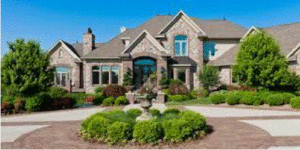 A mortgage payment is usually the biggest monthly expense for most people. Since an adjustable-rate mortgage (ARM) will always start off with a lower rate than a fixed rate mortgage, it is useful to understand the pros and cons of an ARM. Depending on the trends of future interest rates, an ARM can be a money saver or a money pit.
A mortgage payment is usually the biggest monthly expense for most people. Since an adjustable-rate mortgage (ARM) will always start off with a lower rate than a fixed rate mortgage, it is useful to understand the pros and cons of an ARM. Depending on the trends of future interest rates, an ARM can be a money saver or a money pit.
The interest rate on an ARM can change over the life of the loan at various time intervals depending on the type of mortgage product you select. An ARM product is more challenging to understand than a fixed rate mortgage so dealing with a knowledgeable mortgage loan officer is essential. The rate on an ARM is the sum of an index rate plus a fixed margin. The index rate will vary but the fixed margin will not. Most banks use a short-term index rate such as the yield on a one year Treasury bill. The index rate plus the margin is called the fully indexed rate. The ARM will never have a rate less than the fixed margin. For example, if the fixed margin is 3% and the yield on the one year treasury is 0%, the ARM will have a rate of 3%.
The typical ARM rate will change yearly. The date of the first-rate change on an ARM depends on the type of ARM that the borrower initially selected. The four most common ARMs are the 3/1 ARM, the 5/1 ARM, the 7/1 ARM, and the 10/1 ARM. These ARM products are called hybrid ARMS since they have a fixed rate for the time specified and afterwards convert to an adjustable rate which can change once a year. For example, the 3/1 ARM will have a fixed rate for three years and the rate might change starting in year four. The starting rate on loans with a longer initial fixed interest rate will start off higher. For example, the rate on a 5/1 ARM might start off one percentage point lower than the start rate on a 10/1 ARM.
 ARM products have lifetime and yearly rate caps. Although the rate change on an ARM can be substantial over the life of the loan, lenders have a cap on the yearly rate increase to avoid payment shock to borrowers, but the lifetime rate increase can result in much higher payments. Most ARMs cannot increase by more than 2 percent after the initial fixed rate period and the lifetime rate is usually capped at 5 percent above the start rate. For example, in a worst case basis a borrower with a 5/1 ARM at a 2.75% start rate might see an increase to 4.75% in year six, 6.75% in year seven, and reach the lifetime cap of 7.75% in year eight.
ARM products have lifetime and yearly rate caps. Although the rate change on an ARM can be substantial over the life of the loan, lenders have a cap on the yearly rate increase to avoid payment shock to borrowers, but the lifetime rate increase can result in much higher payments. Most ARMs cannot increase by more than 2 percent after the initial fixed rate period and the lifetime rate is usually capped at 5 percent above the start rate. For example, in a worst case basis a borrower with a 5/1 ARM at a 2.75% start rate might see an increase to 4.75% in year six, 6.75% in year seven, and reach the lifetime cap of 7.75% in year eight.
The risk involved with an ARM should be carefully considered. An initial interest rate that is lower than a 30-year fixed rate is a bet that future interest rates will not dramatically increase. This has been the case for the past 14 years and the ARM borrower automatically shifted to a lower rate without the large expenses involved in a refinance. However, even if rates do increase in the future, savings from a low start rate could more than offset higher rates in later years.
No one can predict future interest rates but in a declining or stable interest rate environment, ARM borrowers will save money over time compared to a fixed rate mortgage which almost always has a higher rate than the start rate of an ARM.
An ARM will make sense for a borrower who expects to sell his home within 10 years which is the average number of years a person lives in his home before selling it.
Speak Your Mind